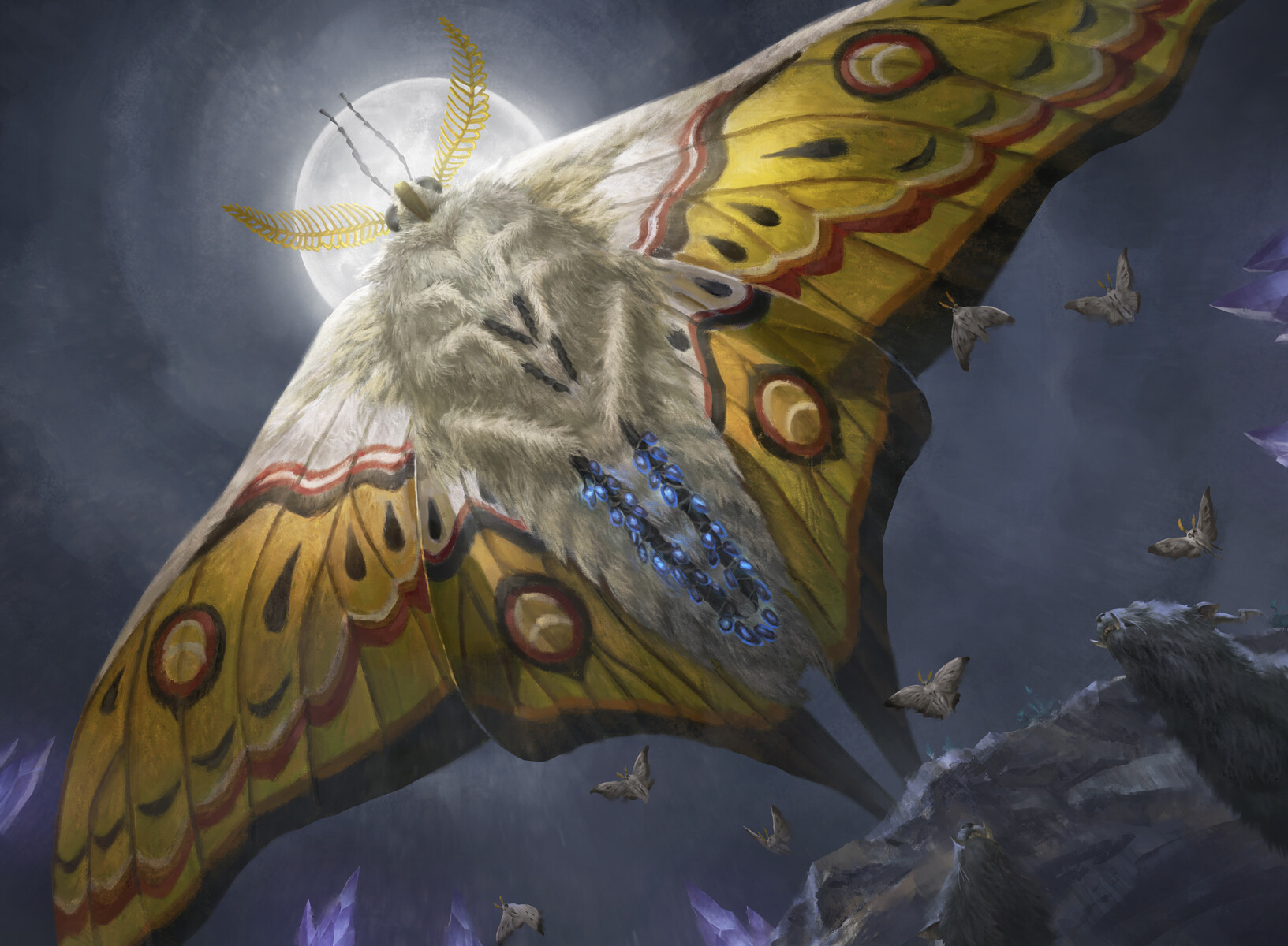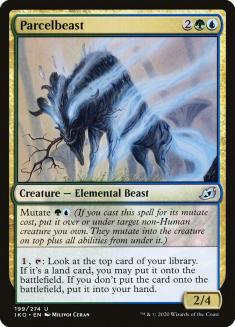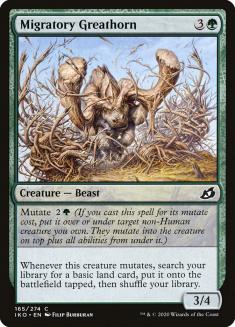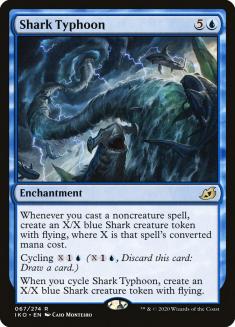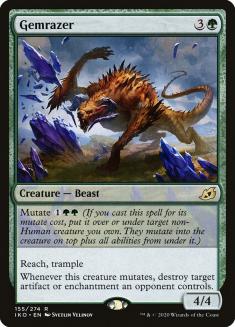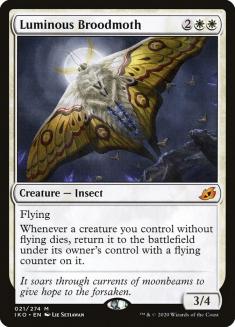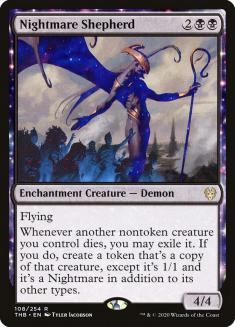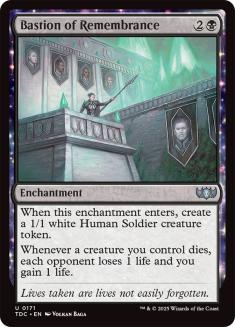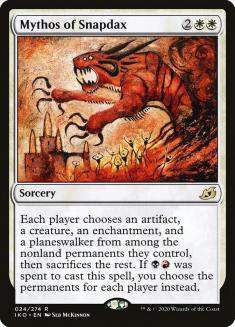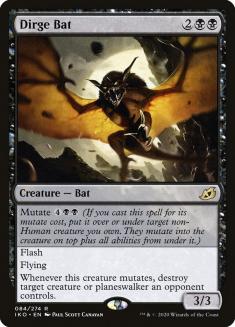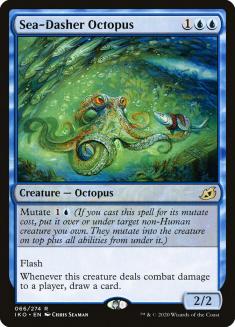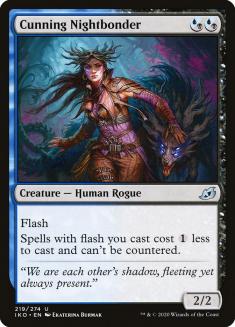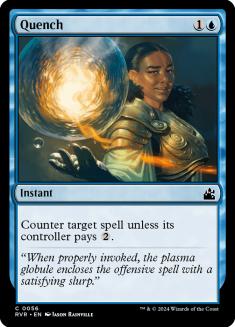Watching the Ikoria Early Access Streamer Event was a strange experience. Granted, everything is a bit surreal right now with the COVID-19 pandemic continuing to keep us all at home, but nothing will stop Magic players from playing with their new toys as early as possible. I spent my day gleefully swapping through various streams to check out what everyone was playing, and largely came away thinking that I was somewhat ahead of the field due to my work with Corey Baumeister on VS Live!.
We’ve been brewing and testing with these cards for two weeks now and have learned a bit about how to maximize their strengths and mitigate their weaknesses. Our head start is sure to evaporate over the coming days as millions of hours are played and decks are tuned in the unyielding crucible of tournament play, but for one shining moment I felt like the best Ikoria player in the world.
That’s not to say there weren’t plenty of impressive decks showing off on Wednesday, but I’m excited to get in the queues this weekend and refine some of the decks I’ve played on stream over the last couple of weeks. We’ve had some impressive brews of our own, and today I’m going to highlight my Top 3, along with updated lists and advice on how to tune them moving forward.
Simic Ramp
My focus here is on Ikoria Standard since Corey and I haven’t delved too deeply into older formats, so let’s start with a familiar shell that has, let’s say, mutated into something new:
Creatures (27)
- 4 Hydroid Krasis
- 4 Paradise Druid
- 4 Arboreal Grazer
- 2 Leafkin Druid
- 3 Brazen Borrower
- 1 Uro, Titan of Nature's Wrath
- 3 Migratory Greathorn
- 2 Illuna, Apex of Wishes
- 4 Parcelbeast
Planeswalkers (4)
Lands (27)
Spells (2)
Sideboard

Hydroid Krasis, Oko, Thief of Crowns, Uro, Titan of Nature’s Wrath. Simic sure has gotten a lot of love from Wizards of the Coast (WotC) in the last year and change. The Simic Ramp shell that has been in Standard in some form or another over that time is set to evolve once again with various cards from Ikoria featuring the mutate mechanic.
Mutate is a very complicated ability that you really have to play with to get a grasp on. There are so many options with any given mutate card and without seeing them in action it’s too hard to find them all. Over our time testing on VS Live!, Corey and I became less impressed with the splashy Apexes since they’re prohibitively expensive and more enamored with cards that have cheap mutate costs. These cards provide less value from the trigger itself, but upgrade your early bodies quickly for a burst of damage to pressure opposing planeswalkers or force them to react and get them off their normal course of action.
In the late-game, these cards are great to target your larger mutate creatures and gain significant value for a lower cost, so they made the Apexes better as well. This list was an attempt to maximize some of those cheap mutate creatures, namely Parcelbeast and Migratory Greathorn.
Both provide additional ramp with the stats to rumble in the red zone when necessary, so they make great targets to upgrade Arboreal Grazer. The curve of Grazer-Greathorn-Nissa leaves your opponent at eleven life and staring down six power and a planeswalker on Turn 3. Casting Parcelbeast on Turn 2 instead sets you up for a long game drawing two cards a turn while also playing defense with a 2/4 body.
Illuna, Apex of Wishes hasn’t received as much hype as the other Apexes, but it excites me because of its potential to create a 6/6 flying attacker out of anything. Conveniently, six damage is enough to kill Nissa, Who Shakes the World. If you get your own Nissa out of the deal too, the game is over. You don’t have many other good hits in the deck, which prevents Illuna from being a bigger part of the deck, but if you hit Hydroid Krasis you can opt to put it in your hand, which is still a good deal.
The ability of mutate to affect combat by buffing your creatures is an unsung aspect of the mechanic, and leads to more aggressively slanted decks. The inclusion of Brazen Borrower is a nod to this new posture the deck is taking on. You also see an emphasis on having mana creatures over Growth Spiral because you need early bodies to use Migratory Greathorn and Parcelbeast.
Corey got a little too enamored with Shark Typhoon in his list, which is a card I like as well, but in more interactive shells like Jeskai Control. Still, here it’s a solid sideboard card against decks with lots of counterspells, letting you establish a threat on their end step and forcing them to react before casting your more important threats. Gemrazer is also an unsung hero here, synergizing with the mutate subtheme as the best Naturalize effect available. Unlike Thrashing Brontodon, this one stays around to rumble and turns your later mutate creatures into more removal for pesky Fires of Inventions or Song of Creations.
Moving forward, this deck will almost assuredly want to add a third color. The mana is too good for it not to be worthwhile to gain access to good removal, Teferi, Time Raveler, or some other powerful card in this large Standard format. But as for what cards you’ll want, it’ll depend on how the rest of the metagame shakes out and what holes the more aggressive direction mutate takes you in opens up. White has been the popular third color recently, but the Triomes make the other colors easier to splash, and the fact that they’re Forests makes them play nicely with Nissa, a significant incentive.
This is a proven core with a new, powerful engine that lets it play an even better early-game, giving it even more versatility. It’s also forgiving enough that you can experiment a lot and not lose your shirt in the process.
Mardu Sacrifice
Next up is an early standout from our testing sessions that has received surprisingly little hype, Mardu Sacrifice featuring Luminous Broodmoth:
Creatures (30)
- 3 Midnight Reaper
- 4 Hunted Witness
- 4 Priest of Forgotten Gods
- 4 Cruel Celebrant
- 4 Mayhem Devil
- 4 Cauldron Familiar
- 3 Woe Strider
- 4 Luminous Broodmoth
Lands (24)
Spells (6)

I originally tried Luminous Broodmoth in an Orzhov Sacrifice shell and it was incredibly impressive, especially in concert with the Cauldron Familiar–Witch’s Oven engine, letting you accumulate a Food for each loop. I later tried it in a Mardu shell to utilize Mythos of Snapdax and Broodmoth stole the show again, while Mythos felt more like a sideboard card against other creature-heavy decks.
It’s easy to compare Luminous Broodmoth to Nightmare Shepherd, a card that fell flat after some early hype around its pairing with Gray Merchant of Asphodel. But Luminous Broodmoth is significantly better for a number of reasons. First is it keeps the actual card around. This lets you create powerful synergies with Cauldron Familiar and other recursive threats as well as mitigate the damage that bounce effects like Petty Theft and Teferi, Time Raveler do.
Then there’s the value in giving the recurred creature flying. Sacrifice decks often win by the skin of their teeth, so any chip shot damage you can get in makes it easier to close the game with Mayhem Devil and Cruel Celebrant. Creating an army of flyers with any sacrifice outlet makes setting up big turns much easier, and lets you turn the corner more easily if you fall behind in the early-game. Luminous Broodmoth is a significant upgrade on Nightmare Shepherd and heavily incentivizes you to move towards white in sacrifice decks.
I’ve opted for Mardu because the mana is workable with Fabled Passage and Savai Triome, though it’s entirely for the power of Mayhem Devil and Mythos of Snapdax in the sideboard. The light splash keeps the mana solid despite a wide spread of mana costs and relatively low curve while offering the most powerful home for all the sacrifice synergies.
Bastion of Remembrance is the last upgrade for these decks from Ikoria, offering a unique twist on the Blood Artist mold of sacrifice payoff, since it’s much harder to remove from the battlefield. That lets you more reliably assemble your synergies through disruption, making it a valuable card, but the three-mana slot on the curve is quite full and I’m not willing to sacrifice Mayhem Devil for the new kid on the block. Ten of these effects with Bastion, Devil, and Cruel Celebrant is a lot, but with Luminous Broodmoth you can exploit them much better than Rakdos Sacrifice.
My major question for this deck is how far we can push the mana. I’d love to cast Kroxa with Luminous Broodmoth, turning it into a full on Blightning or even better but fitting the escape cost next to Broodmoth is ambitious to say the least. With Triomes you can make the mana better at the cost of some speed, and I’m not sure yet how far you can reasonably stretch into full Mardu.
Dimir Flash
Unsurprisingly, I saved the best for last. Or at the very least my favorite. From the minute Brazen Borrower was previewed for Throne of Eldraine I was disappointed not to have the opportunity to play it in a tempo deck with Curious Obsession. Sea-Dasher Octopus has now come to answer my prayers, just like in the princess stories I read as a child.
Flash decks have been a part of Standard for months now, so the established shells of Simic, Izzet, and Temur are obvious homes for Sea-Dasher Octopus. You can also try to relive the Mono-Blue dream, as Todd Anderson is in his most recent article:
But going that direction, especially with the notion that Sea-Dasher Octopus will fill in for Curious Obsession, is worrisome to me because you no longer have access to Spell Pierce and Dive Down to cheaply protect your underpowered threats. The successful flash decks in this Standard environment have blended the tempo elements with more powerful midrange threats like Nissa, Who Shakes the World and Gadwick, the Wizened.
Following in that mold leads me to the unlikely Dimir pairing in order to utilize the synergy between Sea-Dasher Octopus and Dirge Bat:
Creatures (21)
- 1 Pteramander
- 4 Spectral Sailor
- 4 Brazen Borrower
- 4 Dirge Bat
- 1 Voracious Greatshark
- 4 Sea-Dasher Octopus
- 3 Cunning Nightbonder
Lands (24)
Spells (15)

Earlier, I mentioned that the more powerful mutate effects can be effectively subsidized by playing creatures with cheap mutate costs. Sea-Dasher Octopus is the cheapest mutate creature there is, and being able to turn your Dirge Bat into a card draw engine while getting a free Swift End for your troubles is the kind of synergy I’m looking for. Conveniently, this pattern plays out on Turn 4 into Turn 5, leaving you three mana up for any counterspell in the deck.
Dirge Bat gives you another interaction point for anything that slips through the counter wall and along with Octopus allows you to grind opponents out in a way that tempo decks typically have not. This versatility is the reason why I opted for Neutralize over Sinister Sabotage which appeared in the original list, because when behind it will help dig for more impactful spells.
Cunning Nightbonder is another new addition that is keeping Brineborn Cutthroat out of the deck. I haven’t played much with the card but every extra mana in a tempo deck is important and this list has the removal to get a 2/2 through in combat. It’s one of the flex cards in the deck right now though and will have to prove its worth.
If Nightbonder proves valuable, I’m inclined to move to a more creature heavy version with Brineborn Cutthroat as well and fewer counterspells. Alternatively, I could move in a more spell-heavy direction with Pteramander, since the extra one-drop helps Sea-Dasher Octopus come online earlier. This list is caught between those ideas right now and likely needs to pick a lane unless the cards are powerful enough to overcome the slight dyssynergy.
There’s also the question of how to configure the counter suite after Neutralize. Mystical Dispute, Essence Scatter, Negate, Quench, and even Aether Gust are all viable options in some number should the metagame break in the right direction, and I’m taking the diplomatic approach and playing as many singletons as possible in order to get time with all of them. Those numbers will be cleaned up over the weekend as I get reps in, and that’s something I suggest you focus on in any build of tempo deck you want to try.
I just really hope I don’t have to play Quench.
I’m optimistic about the prospects about flash decks, especially in the early metagame where it seems everyone is enamored with casting powerful, expensive cards like Genesis Ultimatum and Gyruda, Doom of Depths. These people are in for a rude awakening when they run into a pile of counterspells backed up by pressure. And when they all turn to their savior, Teferi, Time Raveler for protection, black offers the best answers to the powerful and supremely annoying planeswalker.
This is the time when all the hype or lack thereof gets put to the test and the real contenders emerge. In two weeks we should have a good idea of what Ikoria Standard will look like moving forward, and I’ll be surprised if these decks or something similar aren’t a part of it.

